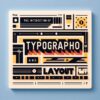Crafting Adaptive Web Interfaces with CSS Grid and Media Queries

Crafting Adaptive Web Interfaces with CSS Grid and Media Queries
In the realm of web development, creating interfaces that are both visually appealing and adaptive to various screen sizes is paramount. With the evolution of CSS Grid and Media Queries, developers now have powerful tools at their fingertips to design flexible web pages. This guide will explore the core principles of using CSS Grid and Media Queries to craft adaptive web interfaces, ensuring your pages look great on any device.
Understanding CSS Grid
CSS Grid is a two-dimensional layout system for the web, allowing developers to create complex designs easily. It works by turning an HTML element into a grid container with rows and columns, giving you complete control over the layout.
How to Implement CSS Grid
1. Define a Grid Container: To start using CSS Grid, you first need to designate an element as a grid container. This is done by setting the ;display> property to ;grid> or ;inline-grid>.
2. Creating Grid Tracks: Next, define the rows and columns inside your grid container using the ;grid-template-rows> and ;grid-template-columns> properties.
3. Placing Items in the Grid: You can then place grid items into the cells of your grid, controlling their positioning and size with properties like ;grid-column>, ;grid-row>, and ;grid-area>.
Responsive Design with Media Queries
Media Queries are a vital tool for creating responsive designs. They allow you to apply CSS rules based on the device’s characteristics, such as its width, height, or orientation.
How to Use Media Queries
1. Syntax: Media Queries are included within your CSS file using the ;@media> rule. Inside the curly braces, you can write the CSS rules that will apply when the conditions of the media query are met.
2. Breakpoints: Commonly, Media Queries are used to change the layout at specific screen widths, known as breakpoints. Choosing the right breakpoints is crucial for your design’s flexibility and usability.
Combining CSS Grid with Media Queries
When used together, CSS Grid and Media Queries empower you to create web interfaces that are truly adaptive. Here’s how you can leverage both to design a responsive web page.
1. Start with a Mobile-First Approach: Begin your design for the smallest screen size, using CSS Grid to layout the content. This approach ensures your site will be mobile-friendly from the start.
2. Apply Media Queries for Larger Screens: As your screen size increases, use Media Queries to adjust the grid’s layout, rearranging content or optimizing it for reading on larger screens.
3. Test Across Devices: Always test your design on various devices and screen sizes to ensure consistency and usability.
Combining the power of CSS Grid with the flexibility of Media Queries allows developers to craft web interfaces that are not only visually appealing but also adaptive to any screen size. By understanding and implementing these techniques, you can elevate your web development skills and create sites that stand out in the modern, multi-device world.


